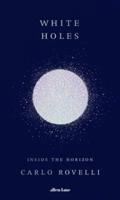Publisher's Synopsis
Why do similar patterns and forms appear in nature in settings that seem to bear no relation to one another? The windblown ripples of desert sand follow a sinuous course that resemles the stripes of a zebra or a marine fish. In the trellis-like shells of microscopic sea creatures we see the same angles and intersections as for bubble walls in a foam. The forks of lightning mirror the branches of a river or a tree. ^l This book explains why these are no coincidences. Nature commonly weaves its tapestry by self-organization, employing no master plan or blueprint but by simple, local interactions between its component parts - be they grains of sand, diffusing molecules or living cells - give rise to spontaneous patters that are at the same time complex and beautiful. Many of these patterns are universal: spirals, spots, and stripes, branches, honeycombs. Philip Ball conducts a profusely illustrated tour of this gallery, and reveals the secrets of how nature's patterns are made.











